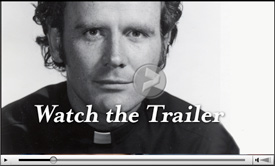Director’s Statement
We’re living in a world at war. And we’re living at a time when people on both sides are using religion as an excuse to go to war.
go to war.
When I met James Carroll and heard his concerns about the coming together of religion and power in our country (set against the backdrop of America’s rush to war) and the long history he had begun to trace of religious hatred and violence, I knew we had a movie.
Our film poses the question: Where did anyone get the idea that it was all right to kill people in the name of God?
When we started to make this film we were shocked to discover how many Americans didn’t seem concerned about a possible breakdown between the separation of Church and State. Insisting that America was a Christian nation, they had somehow revised history to convince themselves that this was a principle of our Founding Fathers. They never asked themselves about the message this could be sending to the people in the Middle East, where we are entrenched in what’s already one of the longest wars ever fought by our country.

Whenever the U.S. is involved in an armed conflict and the lives of American men and women are on the line, it’s controversial to question the reasons that we’re in that war or in what direction our country is headed.But at the U. S. Air Force Academy in Colorado Springs, we discovered that the mission to proselytize and convert was widespread and was being endorsed by many members of the faculty and administration. As this information becomes public, I think more and more Americans (people of faith as well as others) will become uncomfortable with the idea of religion and power coming together.

They will be glad for the opportunity offered by our film to get a clearer idea of where this impulse comes from and will have a better understanding for the terrible price that has been paid for it, especially by Jews.
In translating this story to the screen, we were faced with the challenge of how to bring to life events that happened in the past just as vividly as those that were unfolding today. Our solution was to set out on a journey to the places where the protagonist, James Carroll, had personal connections and where we hoped to find other living characters who had intimate ties to these moments in history. As William Faulkner wrote, “The past is never dead. It’s not even past.” The twists and turns of Carroll’s quest and the “lost” history we explored led us to many compelling characters and emotionally devastating moments. These scenes unfold in a sort of detective story into the past. - Oren Jacoby









News and Updates